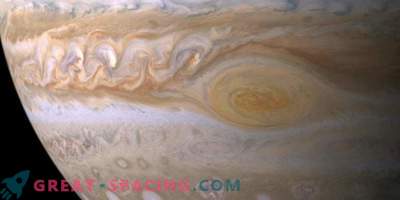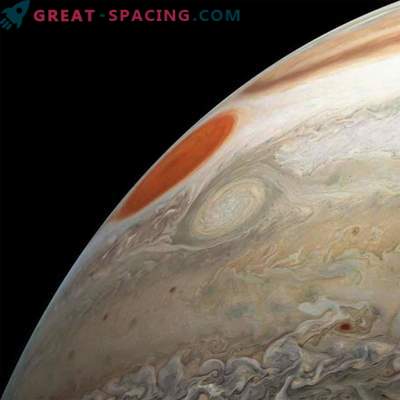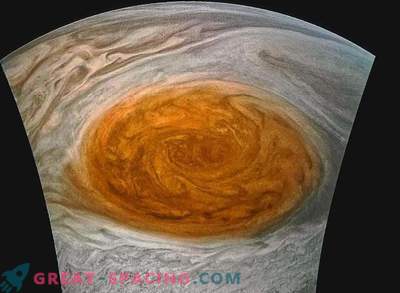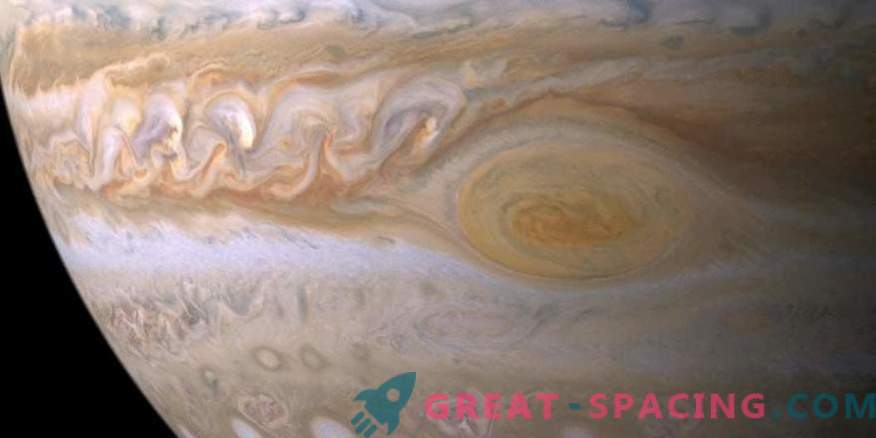
A new study demonstrates the existence of a rich variety of atmospheric phenomena inside Jupiter's Great Red Spot, created by intense hurricane winds at a speed of 450 km / s.
The Big Red Spot is a long-lived oval vortex with a size of 20,000 km. It is considered one of the most popular phenomena in the solar system. The analysis shows that inside the sunspot there are cumulus clouds of storms created by the condensation of ammonia vapors and narrow gravitational waves resembling those of the earth when exposed to wind on mountain tops. However, calm is observed in the center: the clouds rotate in the opposite direction at a maximum speed of 25 km / h.
These phenomena are limited to a thin layer with a thickness of 50 km, which is the roof of a cloud of sunspot, where the inner spot is able to go down a few hundred kilometers. For the analysis used photos taken by JunoCam during a close flight over the Great Red Spot.
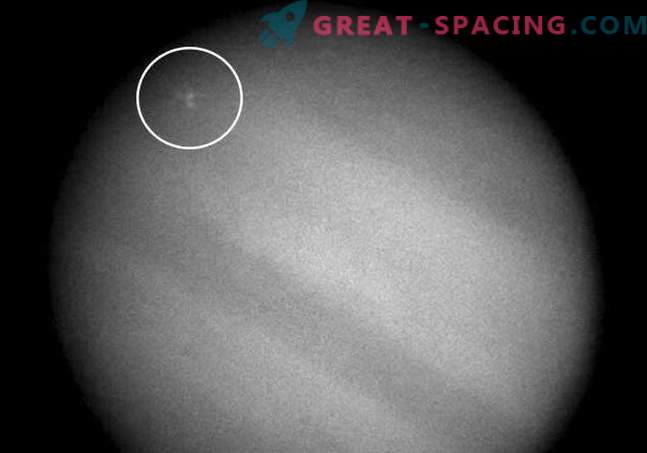
The Great Red Spot, first observed 150 years ago, is captured by a telescope due to the reddish color against the white and yellowish clouds of the planet. To explore the deep atmosphere of Jupiter, the interior and the complex magnetic field, scientists launched the NASA Juno mission. Among the scientific equipment is the JunoCam camera, designed for taking pictures that are aimed at attracting public attention to science.
These photos show not only the planet itself and its atmosphere, but also interesting events. For example, a group of images showed the effects of meteorites on the atmosphere of Jupiter. In 2010-2017 We managed to find 5 flashes of light that lasted less than a second and were caused by objects with a size of 5–20 m. Calculations show that 10–65 such strikes can occur every year, although they are difficult to fix.







